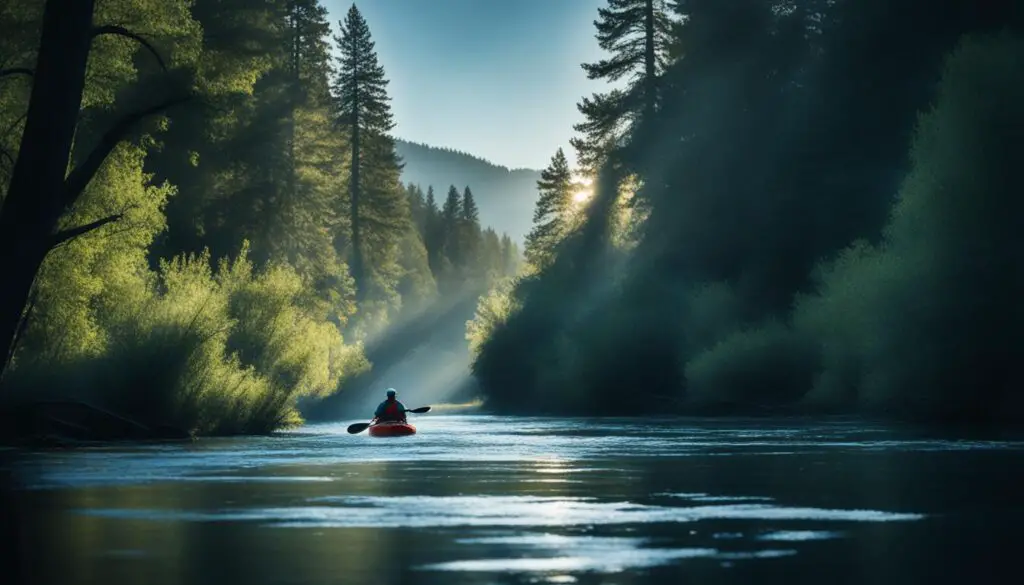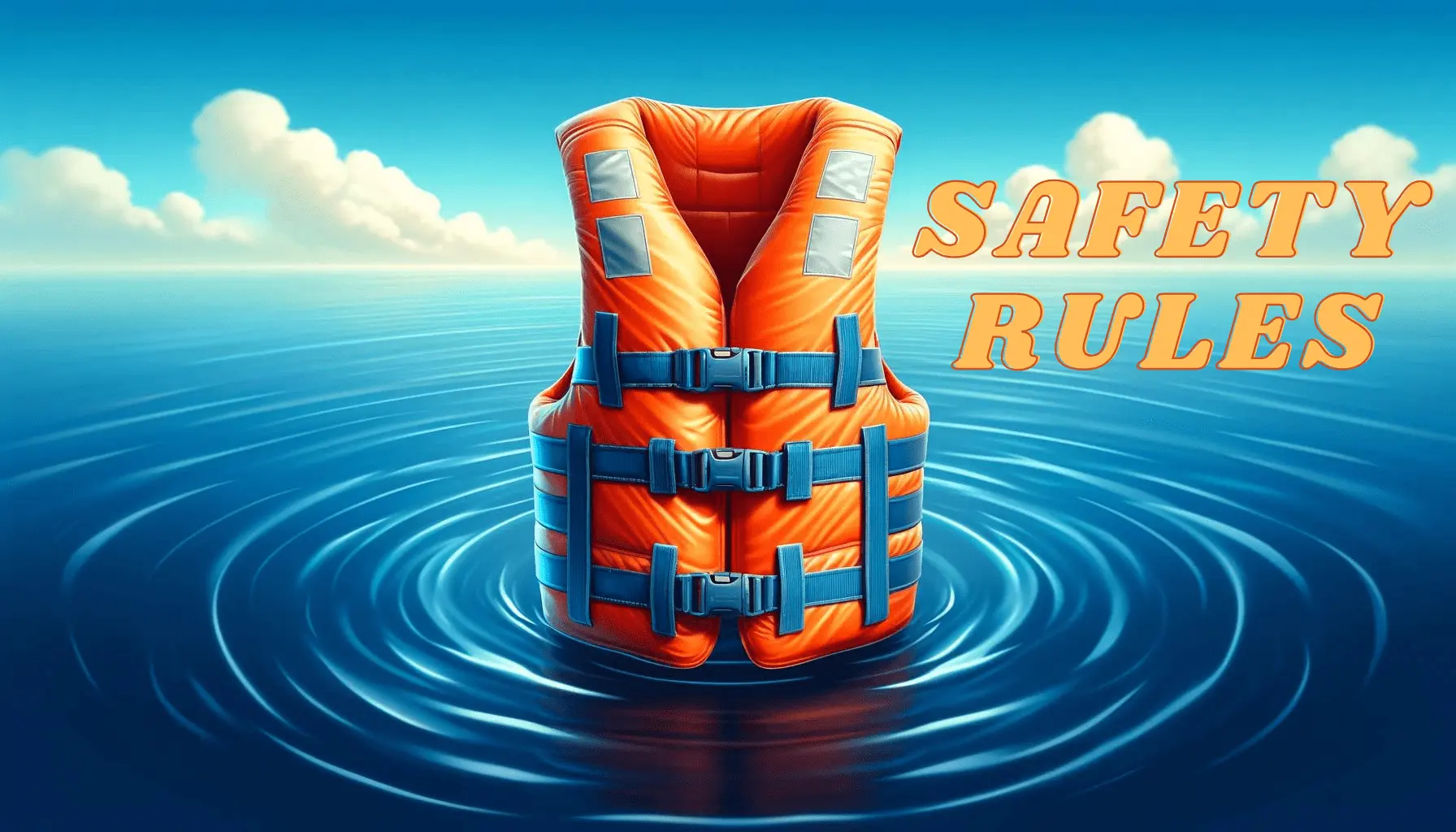When the sun dips below the horizon and the world dons its nocturnal shroud, a question lingers in the minds of adventurous souls: can you kayak at night? We’ve all been enthralled by the lustrous glow of the moon reflecting over rippling waters, but is the surreal beauty of night kayaking worth navigating the unseen risks beneath its surface? As I ponder this question, the very essence of night kayaking safety becomes a puzzle, compelling me to unearth the truths and mysteries of paddling in the dark.
Key Takeaways
- Understanding the enchanting appeal and inherent risks of night kayaking.
- Navigating with heightened awareness and preparation for moonlit excursions.
- Employing risk management strategies tailored specifically to after-dark paddling conditions.
- Familiarizing with legal requirements to ensure compliance while enjoying the nocturnal waterscape.
- Choosing the right equipment to aid in your visibility and safety while exploring under the stars.
- The importance of planning and knowing your environment before embarking on night kayaking adventures.
Understanding the Lure and Risks of Night Kayaking
As darkness envelops the sky, the waters become an entirely different realm, inviting me to explore its quiet magnificence. The alluring call of kayaking in the dark, though incredibly tempting, brings forth unique challenges and an elevated sense of vulnerability.
Entering A New World After Dusk
The transition from day to night transforms the paddling experience, presenting a mysterious blend of serenity and potential peril. When I prepare for night paddling, I’m cognizant of the best practices for kayaking in the dark, allowing myself to embrace the nocturnal beauty while remaining safe.
Identifying Potential Hazards
Navigating waters in darkness demands heightened awareness. The obscurity of night conceals both the familiar and the unexpected, from submerged obstacles to unlit fellow paddlers. I’ve learned that every shadow and rustle is a potential hazard, and maintaining vigilance is non-negotiable.
Common-Sense Risk Management Strategies
To mitigate these risks, I adhere to night paddling techniques that prioritize preparedness and safety. For instance, exploring the selected kayaking trail during daylight hours equips me with valuable insights into natural landmarks and potential danger zones, knowledge that becomes my guiding star when the sun sets.
- Mastering the Route: Acquaintance with the environment by day paves the way for confident navigation after dark.
- Weather and Tide Education: Understanding environmental patterns prevents me from being caught off guard by sudden changes.
- Lighting and Safety Gear: Ensuring my visibility and protection through reliable lights, helmets, and suitable attire is fundamental.
I’ve learned that respect for the unpredictable nature of dark waters, paired with methodical planning and equipping myself with essential gear, can transform night kayaking from a daunting venture into an extraordinary adventure.
Can You Kayak at Night: Legalities and Limitations
When it comes to kayaking after the sun has set, it’s not solely about the thrill of adventure; it’s also about adhering to specific rules for kayaking after sunset. In the United States, accorded by the Coast Guard, kayaks are typically considered ‘vessels under oars’ and are therefore subject to the same navigational rules as any other vessels in the waterways. This implies that certain safety regulations are not just recommendations but legal obligations.
Diving deeper into the particulars, the cornerstone requirement for anyone wishing to enjoy the serenity of nighttime kayaking is the possession of a white light source. This is crucial to prevent any potential collisions in the low-light conditions prevalent between sunset and sunrise. It’s wise to not just adhere to these rules but become well-versed in them; different localities may have variations and additional stipulations regarding the continuous visibility of kayak lights.
Increased visibility becomes even more critical when sharing waters with motorized boats. An elevated, unobstructed white light on your vessel will go a long way in ensuring your safety and making you noticeable to others sharing the waters. Furthermore, for those who are especially cautious or navigate waters with high boat traffic, considering personal emergency lights or the installation of optional sidelights can significantly enhance visibility and safety.
- Carry a white light source to prevent collisions.
- Familiarize yourself with local regulations regarding light visibility on kayaks.
- Use elevated, unobstructed white lights for increased visibility.
- Consider adding personal emergency lights and optional sidelights for extra safety.
By closely adhering to these tips for nighttime kayaking, kayakers can ensure not only a magical experience on the water but a safe return to shore. Be it a casual paddler or a seasoned enthusiast embracing the tranquility of night waters, adhering to the rules is essential.
Essential Equipment for Kayaking at Night
As someone who relishes in the tranquil yet exhilarating experience of night kayaking adventures, I understand the importance of having the right equipment for kayaking at night. It’s not just about having any light, but the apt one to guide you through the darkness while ensuring you’re visible to others.

Choosing the Appropriate Lighting
Choosing the correct form of illumination is a crucial step in planning any night kayaking venture. A reliable light source is your foremost ally against the uncertainties of the dark waters. I opt for waterproof, durable, and bright LED lights that can last through my journey without failing. These lights go beyond mere functionality; they’re a beacon of safety in the dark, outlining my presence to fellow nocturnal adventurers.
Safeguarding with Personal Emergency Lights
Furthermore, I never embark on a night paddle without attaching emergency lights to my personal flotation device (PFD). A strong advocate for safety, I recommend emergency lights with an automatic water-activation feature, which ensures visibility even in unexpected capsizes, enhancing the chances of being spotted by rescuers, or alerting others to my location.
Investing in Visibility for Safety: 360-Degree Lights
In places where the water traffic is more prolific, having a 360-degree light attached to my kayak is non-negotiable. This elevated light serves a dual purpose: it guides my way and signals my presence in a consistent display around the entire horizon, a critical aspect of kayaking equipment when voyaging at night. Ensuring this light is a staple onboard allows me to navigate with confidence, knowing that my visibility is significantly improved.
I believe that night kayaking holds a charm that day trips cannot offer—the calm, the cool air, and the muted sounds only enhance the allure. But, it demands respect and preparedness. Taking the time to gather suitable equipment for kayaking at night can make all the difference in transforming a night paddle from a risky prospect to a delightful exploration under the stars.
Night Kayaking Adventures: Where and How to Paddle Safely
From the mirrored surfaces of calm rivers to the expansive waters of vast lakes, embarking on night kayaking adventures transforms the paddling experience into something utterly magical. My penchant for exploring under the stars has taught me the importance of being familiar with the terrain in the daylight to ensure a safe return once darkness falls. The serenity of the night can easily deceive, necessitating practical tips for nighttime kayaking to navigate these tranquil yet unpredictable waters.
Smaller lakes and slow-moving rivers often serve as my havens for night paddling, offering a controlled environment where surprises are minimal. However, larger bodies of water challenge my competencies with their changing weather patterns and potential for disorientation. Here, technology and tradition blend—using a reliable GPS device for precise location tracking, while also understanding the basics of celestial navigation marks the difference between a trip gone awry and a nocturnal quest filled with awe.
Indeed, selecting the right launch points can significantly ease the mind. Marinas and well-lit piers, for example, act as beacons of comfort and orientation across the inky water’s surface. From the safety of my kayak, I’ve seen the glow of such locations guide many a night paddler back to solid ground after a fulfilling adventure.
Even with technology and experience in my arsenal, the preparation checklist remains a trusty steed. Planning the expedition with meticulous care, dressing in clothing suited to the water’s temperature, and maintaining a white light to punctuate my presence in the shroud of the night are all critical practices. As darkness envelopes my vessel and I, these simple yet essential strategies ensure that our night kayaking adventure remains an intoxicating melody rather than an unsettling cacophony.
- Acquaintance with the paddling site in daylight
- Understanding and monitoring local weather, currents, and winds. Check the weather conditions with the National Weather Service
- Ensuring reliable navigation equipment, both modern and traditional
- Opting for launch points that provide clear visibility for safer returns
- Adhering to safety measures like proper clothing and necessary lighting

As I glide across the still water, the only sounds are the gentle dip and pull of my paddle, the distant call of nocturnal creatures, and the rhythmic beating of my heart—filled with the pure joy of night kayaking adventures, unhindered by the sun’s relentless march, here in the intimate communion with the night.
Conclusion
Navigating the nocturnal waterways is an experience that should be as safe as it is mesmerizing. I’ve explored the critical steps to ensure that night paddling techniques are more than just the mechanics of manoeuvring my kayak in the dark—they are a comprehensive approach to safety, awareness, preparation, and legality. With proper planning and anticipation of potential challenges, my excursions can be both awe-inspiring and secure.
The deployment of equipment for kayaking at night has been woven into the narrative as an indispensable part of this nocturnal venture. Ensuring that I am visible, equipped to handle emergencies, and fully compliant with local regulations is non-negotiable. Gear such as waterproof lanterns, PFDs with strobes, and reflective attire are not mere accessories; they are safeguards that allow me to focus on the splendor of the stars above rather than the darkness below.
As I conclude, the core essence of my nighttime journeys on the water becomes unequivocally clear: the line between the thrill of night kayaking and the imperativeness of safety is one that I must navigate with skill and wisdom. It’s about being in tune with nature, respecting its unpredictability, and arming myself with knowledge. Every paddle stroke under the moon’s glow is a reminder that our adventurous spirit thrives with the right preparation, regardless of the time of day.
You might also be interested in reading: Kayaking Upstream: Guide And Tips To Conquering The Current.
FAQ
Can you kayak at night?
Yes, you can kayak at night, but it requires careful planning, adherence to the law, and the right equipment. Night kayaking safety measures must be strictly followed to navigate waters in darkness safely.
What are the best practices for kayaking in the dark?
The best practices for kayaking in the dark include familiarizing yourself with the area during daylight, wearing a personal flotation device (PFD), having a float plan, carrying proper lighting, and kayaking with a companion.
What are the common-sense risk management strategies for night kayaking?
Common-sense strategies include sticking close to the shore, avoiding high-traffic areas, using proper lighting, wearing your PFD, informing someone about your trip, and understanding the weather and water conditions.
What are the rules for kayaking after sunset?
Rules for kayaking after sunset can vary by location, but generally include carrying a white light to alert other vessels of your presence. It’s important to check local laws regarding navigation and lighting requirements for kayakers.
What essential equipment do I need for kayaking at night?
Essential equipment for kayaking at night includes a PFD, white lighting visible in all directions, personal emergency lights such as strobes, a whistle for signaling, and communication devices. Proper attire and a GPS device or compass are also advisable.
Can I use a headlamp while kayaking at night?
Yes, a headlamp can be used for hands-free lighting while kayaking at night, but be mindful that it can affect night vision and the visibility of others. It’s recommended to have additional lighting on your kayak to maintain 360-degree visibility.
What techniques should I employ when navigating waters in darkness?
When navigating waters in darkness, use a combined approach of technological aids like a GPS and traditional skills like reading the stars and knowing the shoreline silhouette. Always remain aware of your surroundings and proceed with caution.
How do I ensure I’m visible to other vessels when night kayaking?
To ensure visibility to other vessels when night kayaking, use lights that are elevated and provide a 360-degree beam. Consider adding reflective material to your gear and kayak, and use emergency strobe lights that can be seen from a distance.
Are there special considerations for night kayaking adventures?
Special considerations for night kayaking adventures include verifying the water temperature and wearing suitable clothing, knowing the route and weather forecasts in advance, and limiting your excursions to areas you’re familiar with from daytime exploration.
What should I do if I encounter an emergency while kayaking at night?
If you encounter an emergency while kayaking at night, use your whistle or emergency light to signal for help. Try to stay with your kayak, which offers visibility and flotation. Contact emergency services if necessary, using a cell phone or VHF radio if you have one.



